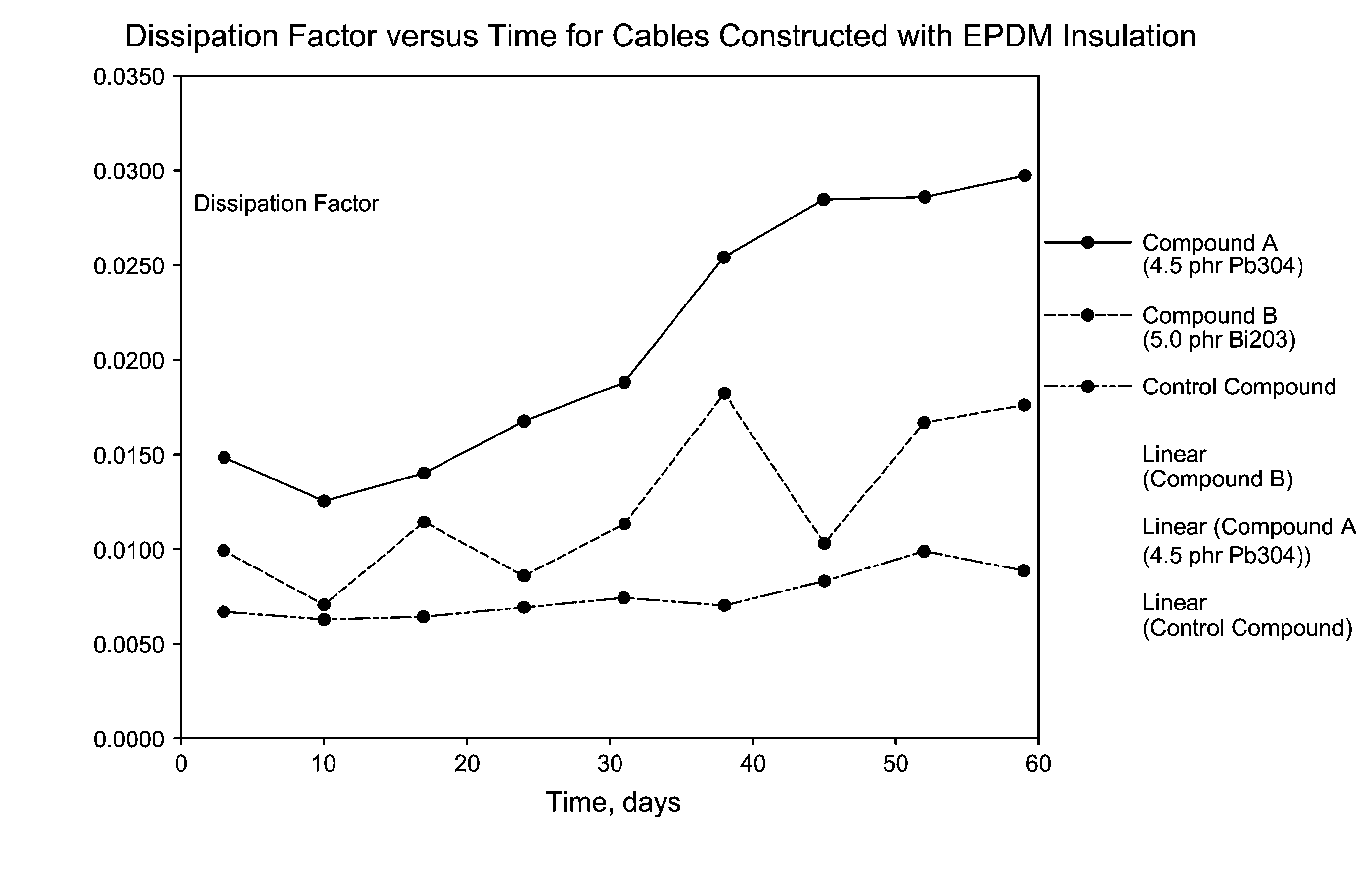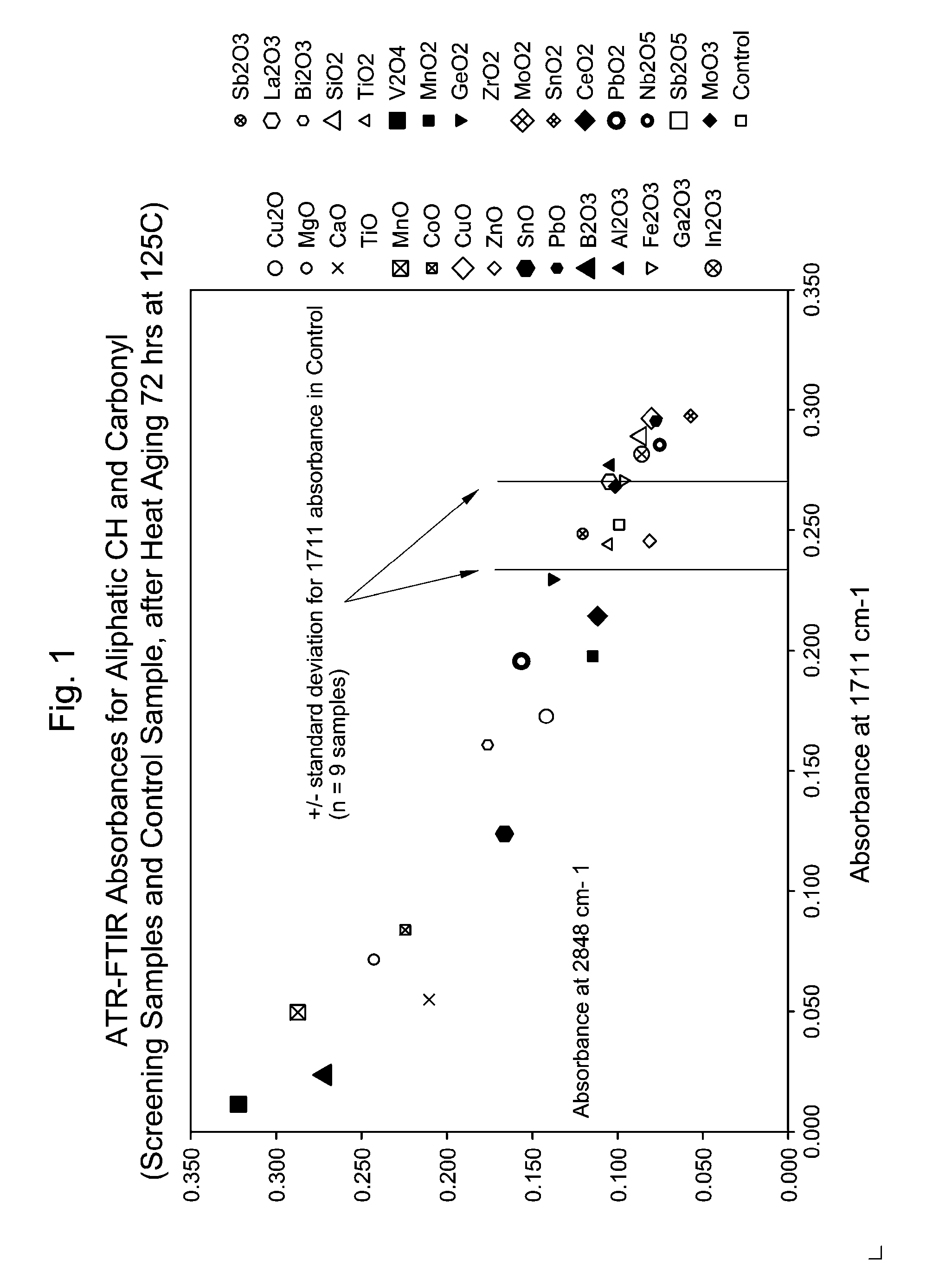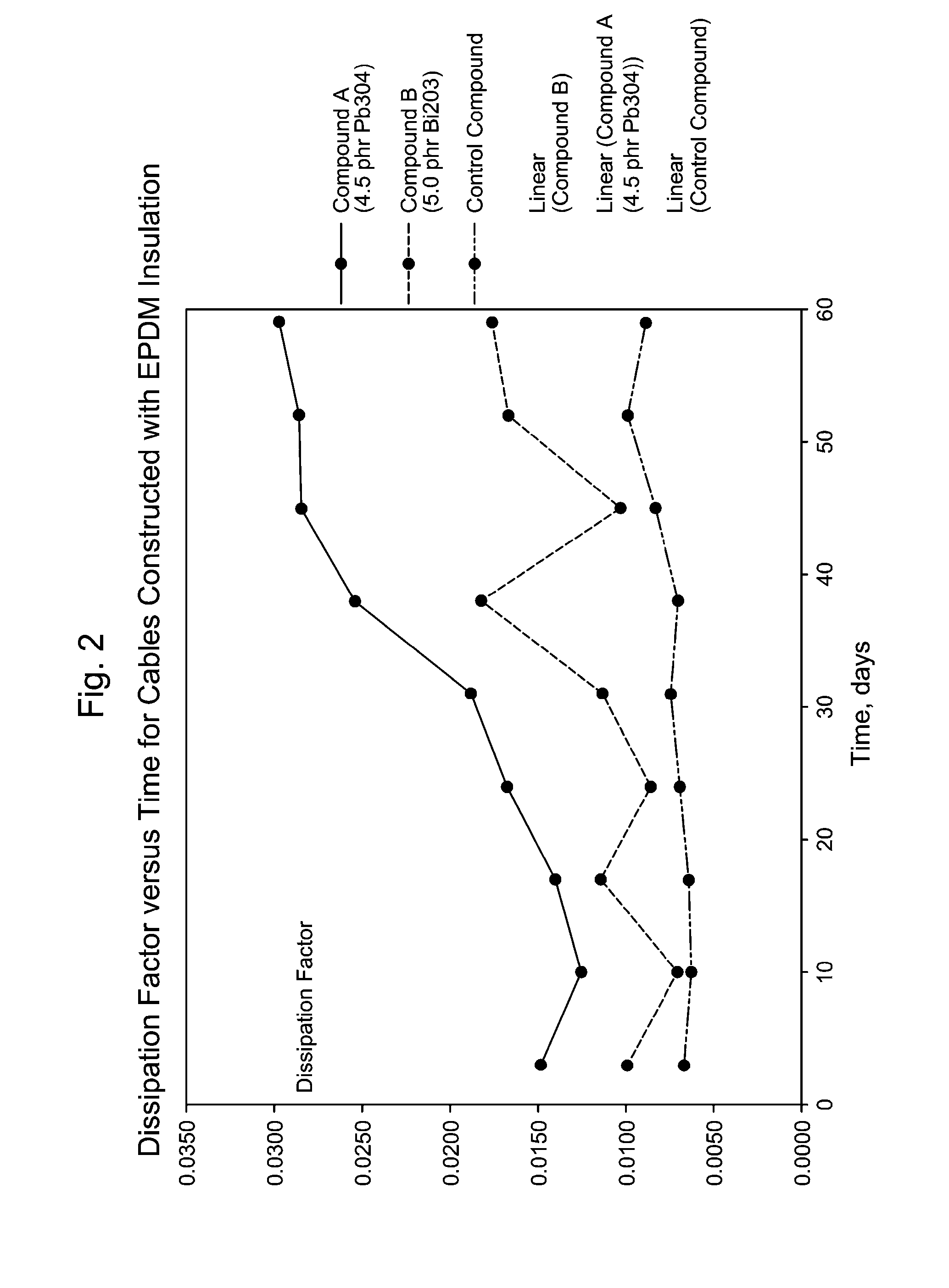Oxides for Protection Against Electrochemical Oxidation and Ionic Contamination in Medium-Voltage Power-Cable Insulation
a technology of oxides and power cables, applied in the direction of organic insulators, solid balls, sports equipment, etc., can solve the problems of oxidation of polymers, decomposition of water, and breakdown of electrical performance of polymers
- Summary
- Abstract
- Description
- Claims
- Application Information
AI Technical Summary
Benefits of technology
Problems solved by technology
Method used
Image
Examples
examples
[0041]The foregoing discussion can be further described with reference to the following non-limiting examples. Table 1 contains the formulations and physical properties for three specific power coating compounds that were evaluated. Though each of Examples 1, 2 and Comparative Example 3 contain zinc oxide, this oxide is not added for purposes of preventing electrochemical oxidation or ionic contamination, though some residual effects on these properties may result from its presence. Rather, the zinc oxide is present as an accelerant to speed the cross-linking reaction with the rubber component of the compound. Therefore, Comparative Example 1 will heretofore be referred to as “oxide free,” meaning that it is free of any additional metal oxide added for purposes of testing their effects on electrochemical oxidation and / or ionic contamination.
TABLE 1Formulations and Physical Properties for EPDM Insulation CompoundsExample 1Example 2Comparative Ex. 1VISTALON 8731100100100TRANSLINK 37 (...
examples 3-33
[0056]Additional tests were conducted using various other oxides than those shown in Examples 1 and 2. The tests of Table 5 were conducted on compounds mixed according to the following formula: 100 parts by weight VISTALON 8731, 2.5 phr metal oxide and 3.3 phr DiCup. These formulations were mixed and ASTM tensile pads were prepared by vulcanization of the compound at 180° C. for 10 minutes.
[0057]An Attenuated Total Reflectance Fourier Transform Infrared (ATR FTIR) procedure was employed that measures the extent of oxidation of the sample tensile pad by measuring: (a) the disappearance of aliphatic hydrogen through monitoring the absorption at 2848 cm−1 and (b) the appearance of oxidation through monitoring the carbonyl absorption at 1711 cm−1. The tensile pads were oven aged at 125° C. for 72 hours and the differences in both absorption values before and after aging for each pad was recorded.
[0058]The results of these tests are provided in Table 5. As shown in Table 5, the oxides te...
PUM
| Property | Measurement | Unit |
|---|---|---|
| Temperature | aaaaa | aaaaa |
| Temperature | aaaaa | aaaaa |
| Temperature | aaaaa | aaaaa |
Abstract
Description
Claims
Application Information
 Login to View More
Login to View More - R&D
- Intellectual Property
- Life Sciences
- Materials
- Tech Scout
- Unparalleled Data Quality
- Higher Quality Content
- 60% Fewer Hallucinations
Browse by: Latest US Patents, China's latest patents, Technical Efficacy Thesaurus, Application Domain, Technology Topic, Popular Technical Reports.
© 2025 PatSnap. All rights reserved.Legal|Privacy policy|Modern Slavery Act Transparency Statement|Sitemap|About US| Contact US: help@patsnap.com



